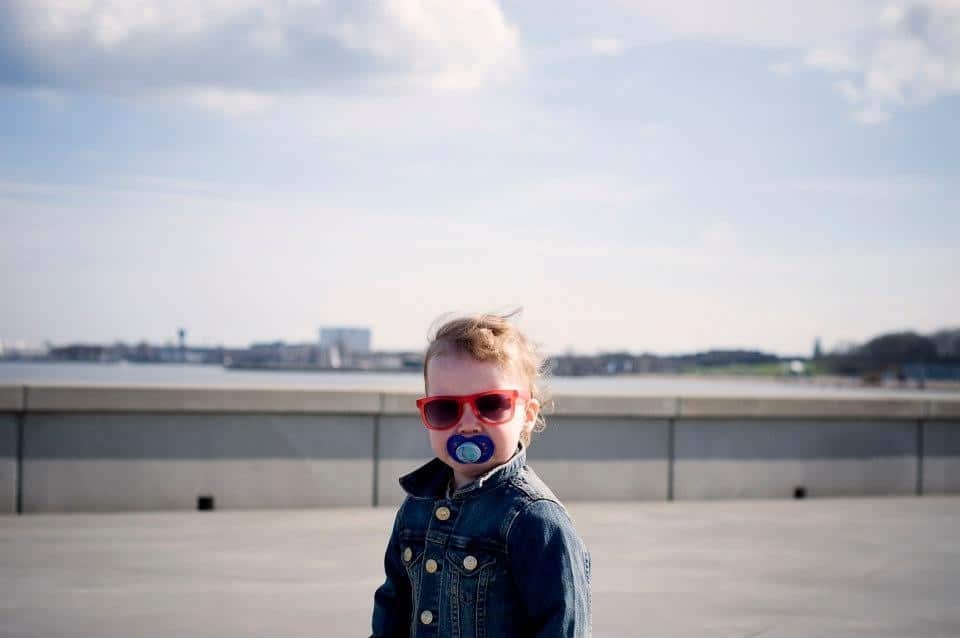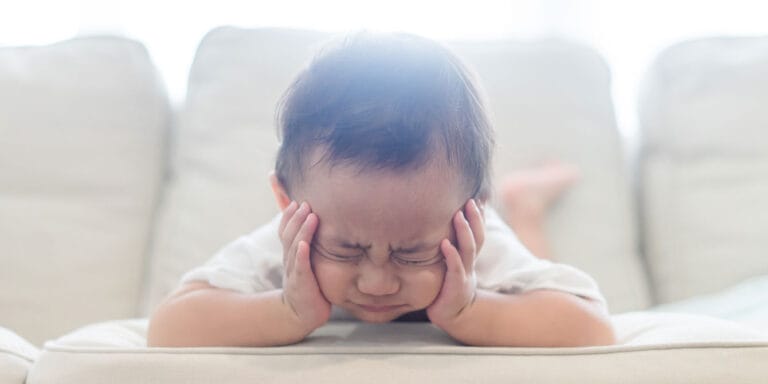4 peaceful ways to help your child give up the pacifier

Parting can be such sweet sorrow, so long binky!
Table of Contents
There’s a lot of conflicting advice out there regarding all things parenting, and when (or if) to wean from the pacifier is no exception. Some say to wean children off a pacifier by 12 months, others say to trust them to give it up when they’re ready.
Everyone has a different story as to what worked and what was an epic fail. So, I’m going to give you the best advice that I can give you, and then offer you several helpful tips that you can choose from, because I recognize that you and your kiddo do not need to fit in a box and that—get this—every child is different!
Here’s what’s good:
1. Babies have a developmental need to suck. It provides them comfort. This may free your breasts from being the pacifiers.
2. Offering pacifiers to infants at the onset of sleep reduces the risk of sudden infant death syndrome (SIDS).
3. Some studies show that pacifier use helps relieve pain from minor procedures.
4. In preterm infants, a Cochrane review found that non-nutritive sucking was associated with shorter hospital stays and improved bottle feeding.
Here’s what’s not so good:
1. According to the American Academy of Family Physicians, there are mixed results in studies regarding this, but using a pacifier may lead to early breast weaning. As such, they suggest not introducing a pacifier until breastfeeding habits are well established, though if your baby is preterm, they don’t discourage it (see no. 4 above).
2. Pacifier use could lead to dental problems after 24 months of age and become more problematic after 48 months. In one study, malocclusion occurred in 71% of children who sucked a pacifier or finger beyond age four, in 32% who quit pacifiers between ages three and four, and in 14% of those who stopped before age two. The American Dental Association and American Academy of Pediatric Dentistry recommend that pacifier use be discouraged after age four.
3. Several studies show that pacifiers are often colonized with Candida and bacterial organisms, and 21 out of 40 binkies tested had positive culture findings. Latex pacifiers were more affected than silicone.
4. There is also a link between ear infections and pacifier use. So, if your little one gets ear infections often, this could be the culprit.
Options for weaning, or not–whatever works for you, mama!
1. Trust in nature and your child
This option is the least stressful on both parent and child. Most children wean themselves between the ages of three and four. This is the option I’d choose, though if my child were over age four, I might choose a different option. And don’t worry, I have never seen a middle schooler with a pacifier, so I’m pretty sure he’d eventually let it go.
Of course, if your child starts to develop dental problems or wakes up several times per night every time it falls out of her mouth, I can understand choosing a different option. However, if your child’s binky use isn’t particularly irksome, you might want to try this “let it happen naturally” approach.
2. Bring in a bit of magic to help you out
I personally think childhood is magical and therefore the perfect time to believe in magical beings. It’s a time of make-believe, where we can pretend to be mermaids and believe in fairies, so I see no harm gathering up the pacifiers in a bucket for the Binky Fairy to pick up.
This could be a painless and even fun way for your child to give up her pacifiers. The magical fairy comes at night to gather the pacifiers. Leaving a small gift in return, she takes the binkies to the baby fairies. I’ve read stories of the biggest binky addicts getting on board and excited to give their beloved binkies to the baby fairies. A little note, a small gift, a bit of glitter—it’s done! However, I know there are some parents who think this is deceitful, and I fully respect that opinion.
3. Modify the pacifier to make it less appealing
Many parents poke small holes in the pacifier or cut an X shape in the tip so that it loses suction, making the child not want it anymore. Of course, you can’t tell the them you’re doing this! This works beautifully for some children.
4. Take the long and gentle route in steps
If your child uses the pacifier throughout the day, cut it back to only allowing it for bedtime and naps. Once your child gets used to this, you can cut out the use at naptime so she only uses it at bedtime.
Once that is established, it is time to take it away at bedtime. The key to this is patience and lots of empathy. Understand that this may be a difficult transition and be prepared to be emotionally and physically available to soothe your child through a few difficult nights and naps.
Move very slowly, only proceeding when your child is comfortable with each stage so as not to cause anxiety, and importantly, show great confidence in your child (and you) to get by without the binky. Use positive language and keep an upbeat attitude about it—it could mean needing to stay with your child until she falls asleep each night to provide comfort.
Going cold turkey is an option, of course, but not one that I feel comfortable recommending.
So here’s my best advice to those of you wondering if and when you should take away your child’s binky—follow your heart, and whatever you choose to do, do it with kindness, confidence, and respect. Ultimately, this is your child and your choice. Just don’t stress over it too much, mama.





































